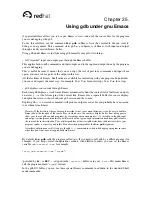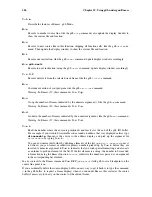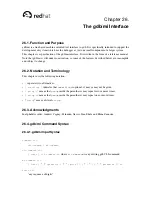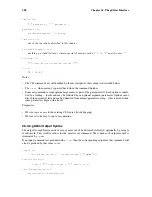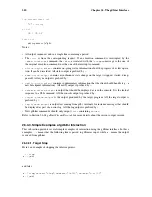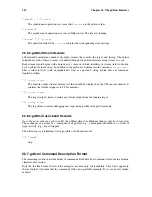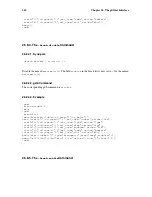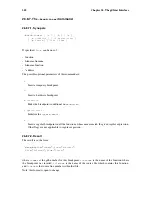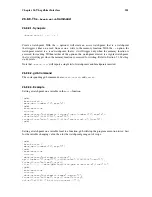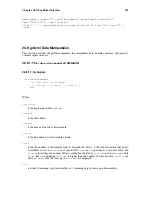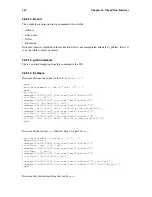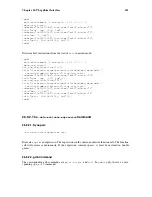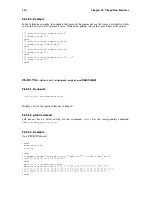
212
Chapter 26. The gdb/mi Interface
"^done" [ ","
results
]
The synchronous operation was successful,
results
are the return values.
"^running"
The asynchronous operation was successfully started. The target is running.
"^error" ","
c-string
The operation failed. The
c-string
contains the corresponding error message.
26.6.2. gdb/mi Stream Records
gdb internally maintains a number of output streams: the console, the target, and the log. The output
intended for each of these streams is funneled through the gdb/mi interface using
stream records
.
Each stream record begins with a unique
prefix character
which identifies its stream (refer to Section
26.4.2
gdb/mi Output Syntax
). In addition to the prefix, each stream record contains a
string-output
.
This is either raw text (with an implicit new line) or a quoted C string (which does not contain an
implicit newline).
"~"
string-output
The console output stream contains text that should be displayed in the CLI console window. It
contains the textual responses to CLI commands.
"@"
string-output
The target output stream contains any textual output from the running target.
"&"
string-output
The log stream contains debugging messages being produced by gdb’s internals.
26.6.3. gdb/mi Out-of-band Records
Out-of-band
records are used to notify the gdb/mi client of additional changes that have occurred.
Those changes can either be a consequence of gdb/mi (e.g., a breakpoint modified) or a result of
target activity (e.g., target stopped).
The following is a preliminary list of possible out-of-band records.
"*" "stop"
stop
26.7. gdb/mi Command Description Format
The remaining sections describe blocks of commands. Each block of commands is laid out in a fashion
similar to this section.
Note the the line breaks shown in the examples are here only for readability. They don’t appear in
the real output. Also note that the commands with a non-available example (N.A.) are not yet imple-
mented.
Summary of Contents for ENTERPRISE LINUX 3 - SECURITY GUIDE
Page 1: ...Red Hat Enterprise Linux 3 Debugging with gdb ...
Page 12: ...2 Chapter 1 Debugging with gdb ...
Page 28: ...18 Chapter 4 Getting In and Out of gdb ...
Page 34: ...24 Chapter 5 gdb Commands ...
Page 44: ...34 Chapter 6 Running Programs Under gdb ...
Page 68: ...58 Chapter 8 Examining the Stack ...
Page 98: ...88 Chapter 10 Examining Data ...
Page 112: ...102 Chapter 12 Tracepoints ...
Page 118: ...108 Chapter 13 Debugging Programs That Use Overlays ...
Page 138: ...128 Chapter 14 Using gdb with Different Languages ...
Page 144: ...134 Chapter 15 Examining the Symbol Table ...
Page 170: ...160 Chapter 19 Debugging remote programs ...
Page 198: ...188 Chapter 21 Controlling gdb ...
Page 204: ...194 Chapter 22 Canned Sequences of Commands ...
Page 206: ...196 Chapter 23 Command Interpreters ...
Page 216: ...206 Chapter 25 Using gdb under gnu Emacs ...
Page 296: ...286 Chapter 27 gdb Annotations ...
Page 300: ...290 Chapter 28 Reporting Bugs in gdb ...
Page 322: ...312 Chapter 30 Using History Interactively ...
Page 362: ...352 Appendix D gdb Remote Serial Protocol ...
Page 380: ...370 Appendix F GNU GENERAL PUBLIC LICENSE ...
Page 386: ...376 Appendix G GNU Free Documentation License ...
Page 410: ......






